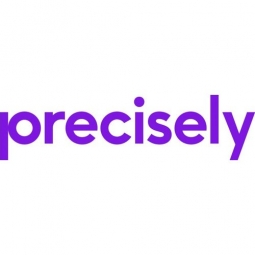公司规模
Large Corporate
地区
- America
国家
- United States
产品
- Precisely Connect
- Microsoft Azure Databricks
技术栈
- Change Data Capture (CDC)
- Batch ETL
- Data Lake
实施规模
- Enterprise-wide Deployment
影响指标
- Productivity Improvements
- Digital Expertise
- Innovation Output
技术
- 分析与建模 - 大数据分析
- 平台即服务 (PaaS) - 数据管理平台
- 应用基础设施与中间件 - 数据交换与集成
适用行业
- 金融与保险
适用功能
- 商业运营
用例
- 远程资产管理
服务
- 系统集成
- 数据科学服务
关于客户
The client is a full-service credit union with over 10 million members and assets exceeding $130 billion USD. It employs more than 22,000 people across over 300 locations worldwide. Unlike traditional banks, credit unions serve specific groups of people, such as employees of a particular company or members of a not-for-profit social group. This credit union is committed to providing personalized service to its members, who expect financial strength, safety, and better interest rates compared to larger banks. The credit union serves millions of Americans, including those living and working abroad, offering them a sense of financial security and a connection to home. To remain competitive, the credit union must be more efficient, innovative, and technologically advanced than its competitors.
挑战
Serving nearly 10 million members across the U.S. and in dozens of countries, with assets and transactions handled in just as many different currencies, requires a truly global presence and technological capabilities. This credit union has 22,000 employees working at its three operations centers and over 4,000 branch locations globally. And its core IT is likewise expansive and complex. So, like thousands of other global financial firms, it relies heavily upon IBM mainframe systems to run its business. While mainframe systems are unsurpassed in their ability to process millions of banking transactions at millisecond speeds, their complex and unique architecture and data formats make it extremely difficult to access and use the data they generate for business analytics, ITOM or to manage enterprise IT security in an integrated way. So too, building and running applications on mainframe to provide the kind of mobile and online services that people expect is more than challenging. The specialized skills and extremely long development and testing cycles required are just impractical and costly. So, when the credit union’s Data Governance and Management team embarked on a three-year effort to modernize its systems and services, one of their first and most urgent issues was getting past the restrictions imposed by mainframe systems in order to build truly data-driven, AI powered and cloud native operations. The higher-level objective driving that architectural transformation was to be able to run advanced analytics on huge volumes of customer data, to derive meaningful insights that could in turn guide and accelerate the creation and deployment of innovative new services.
解决方案
The team understood from the start that not only was it critical to have access to all their mainframe-generated customer data, it was just as important to be able to deliver it to their other core systems, developers and data scientists as quickly and continuously as possible. To achieve this, the team built a Microsoft Azure Databricks environment which it dubbed the 'Data Ingestion Factory.' The objective was to feed all their customer data streams into the Databricks data lake as soon as it was created, cleansing, curating and making it accessible to developers and data scientists 'ahead of demand,' that is, avoiding reactive, ad hoc data collection efforts each time a new application or service was being developed. To make all this possible, they implemented Precisely Connect as their mainframe data collection and forwarding solution. Connect uses efficient and flexible change data capture (CDC) and batch ETL capabilities to deliver mainframe data, including Db2/z, IMS, and VSAM files, to cloud data lakes and analytics platforms. Connect’s graphical interface makes it fast and easy to create flexible and re-useable data transformation and delivery models, with no need for specialized skills, coding or tuning, even when working with complex mainframe data.
运营影响
数量效益

Case Study missing?
Start adding your own!
Register with your work email and create a new case study profile for your business.
相关案例.

Case Study
Real-time In-vehicle Monitoring
The telematic solution provides this vital premium-adjusting information. The solution also helps detect and deter vehicle or trailer theft – as soon as a theft occurs, monitoring personnel can alert the appropriate authorities, providing an exact location.“With more and more insurance companies and major fleet operators interested in monitoring driver behaviour on the grounds of road safety, efficient logistics and costs, the market for this type of device and associated e-business services is growing rapidly within Italy and the rest of Europe,” says Franco.“The insurance companies are especially interested in the pay-per-use and pay-as-you-drive applications while other organisations employ the technology for road user charging.”“One million vehicles in Italy currently carry such devices and forecasts indicate that the European market will increase tenfold by 2014.However, for our technology to work effectively, we needed a highly reliable wireless data network to carry the information between the vehicles and monitoring stations.”

Case Study
Safety First with Folksam
The competitiveness of the car insurance market is driving UBI growth as a means for insurance companies to differentiate their customer propositions as well as improving operational efficiency. An insurance model - usage-based insurance ("UBI") - offers possibilities for insurers to do more efficient market segmentation and accurate risk assessment and pricing. Insurers require an IoT solution for the purpose of data collection and performance analysis

Case Study
Smooth Transition to Energy Savings
The building was equipped with four end-of-life Trane water cooled chillers, located in the basement. Johnson Controls installed four York water cooled centrifugal chillers with unit mounted variable speed drives and a total installed cooling capacity of 6,8 MW. Each chiller has a capacity of 1,6 MW (variable to 1.9MW depending upon condenser water temperatures). Johnson Controls needed to design the equipment in such way that it would fit the dimensional constraints of the existing plant area and plant access route but also the specific performance requirements of the client. Morgan Stanley required the chiller plant to match the building load profile, turn down to match the low load requirement when needed and provide an improvement in the Energy Efficiency Ratio across the entire operating range. Other requirements were a reduction in the chiller noise level to improve the working environment in the plant room and a wide operating envelope coupled with intelligent controls to allow possible variation in both flow rate and temperature. The latter was needed to leverage increased capacity from a reduced number of machines during the different installation phases and allow future enhancement to a variable primary flow system.

Case Study
Automated Pallet Labeling Solution for SPR Packaging
SPR Packaging, an American supplier of packaging solutions, was in search of an automated pallet labeling solution that could meet their immediate and future needs. They aimed to equip their lines with automatic printer applicators, but also required a solution that could interface with their accounting software. The challenge was to find a system that could read a 2D code on pallets at the stretch wrapper, track the pallet, and flag any pallets with unread barcodes for inspection. The pallets could be single or double stacked, and the system needed to be able to differentiate between the two. SPR Packaging sought a system integrator with extensive experience in advanced printing and tracking solutions to provide a complete traceability system.

Case Study
Transforming insurance pricing while improving driver safety
The Internet of Things (IoT) is revolutionizing the car insurance industry on a scale not seen since the introduction of the car itself. For decades, premiums have been calculated using proxy-based risk assessment models and historical data. Today, a growing number of innovative companies such as Quebec-based Industrielle Alliance are moving to usage-based insurance (UBI) models, driven by the advancement of telematics technologies and smart tracking devices.
Case Study
Enhancing Security and Compliance in Remitly's Global Money Transfer Service with Fastly
Remitly, an online remittance service, was faced with the challenge of securing its proprietary global transfer network. The company needed a security solution that could meet PCI requirements and protect customers' sensitive transactions through its mobile application. The solution had to be capable of defending against new and emerging attack types without impacting performance. Remitly also had to deal with irregular traffic patterns, such as a sudden spike in account transfers from a small network segment on the Pacific coastline of South America. The company needed to determine in real time whether such traffic indicated an attack or valid requests. A traditional web application firewall (WAF) would not be able to distinguish this traffic, potentially leading to customer frustration if the IP was blacklisted.







